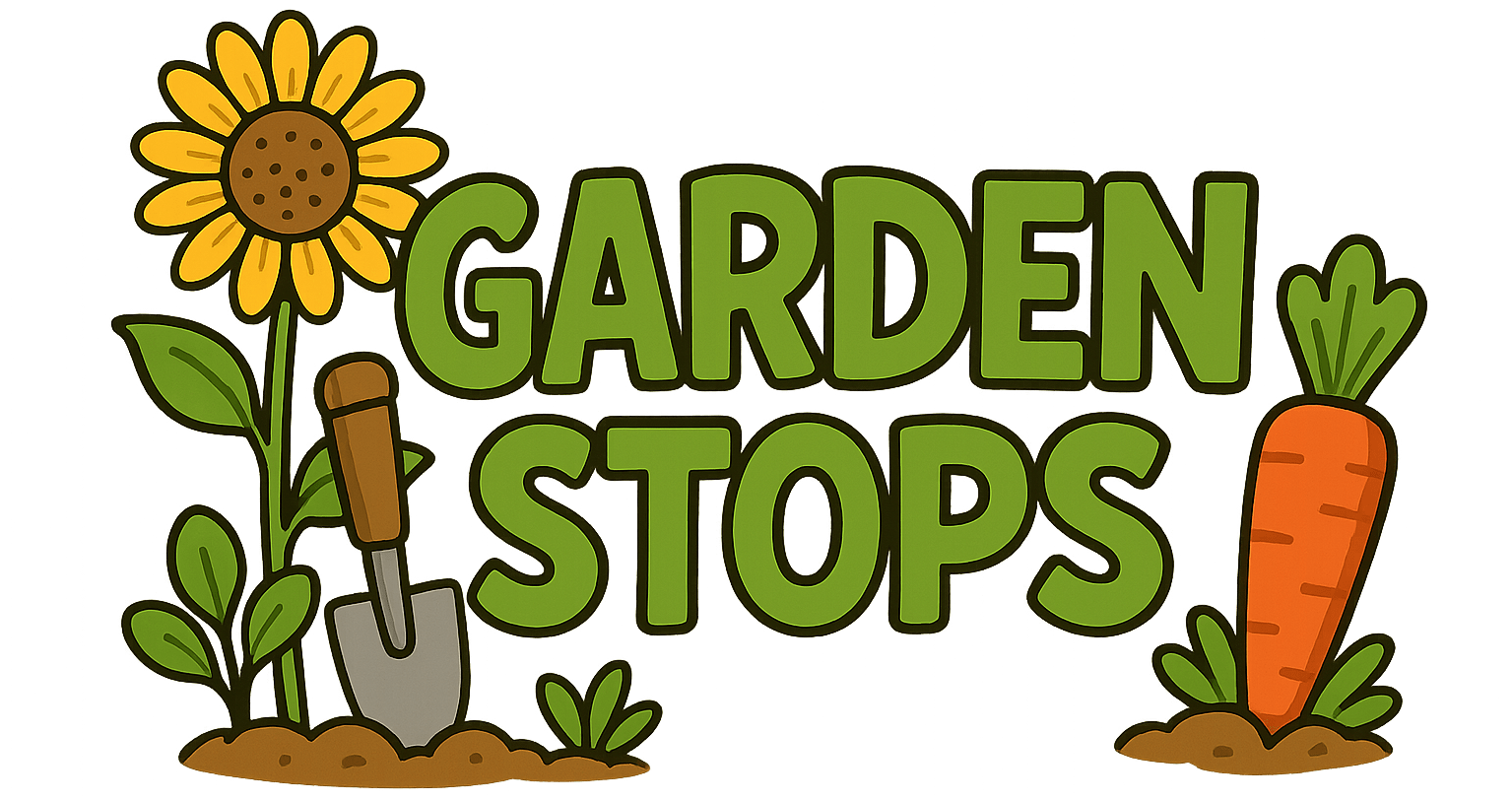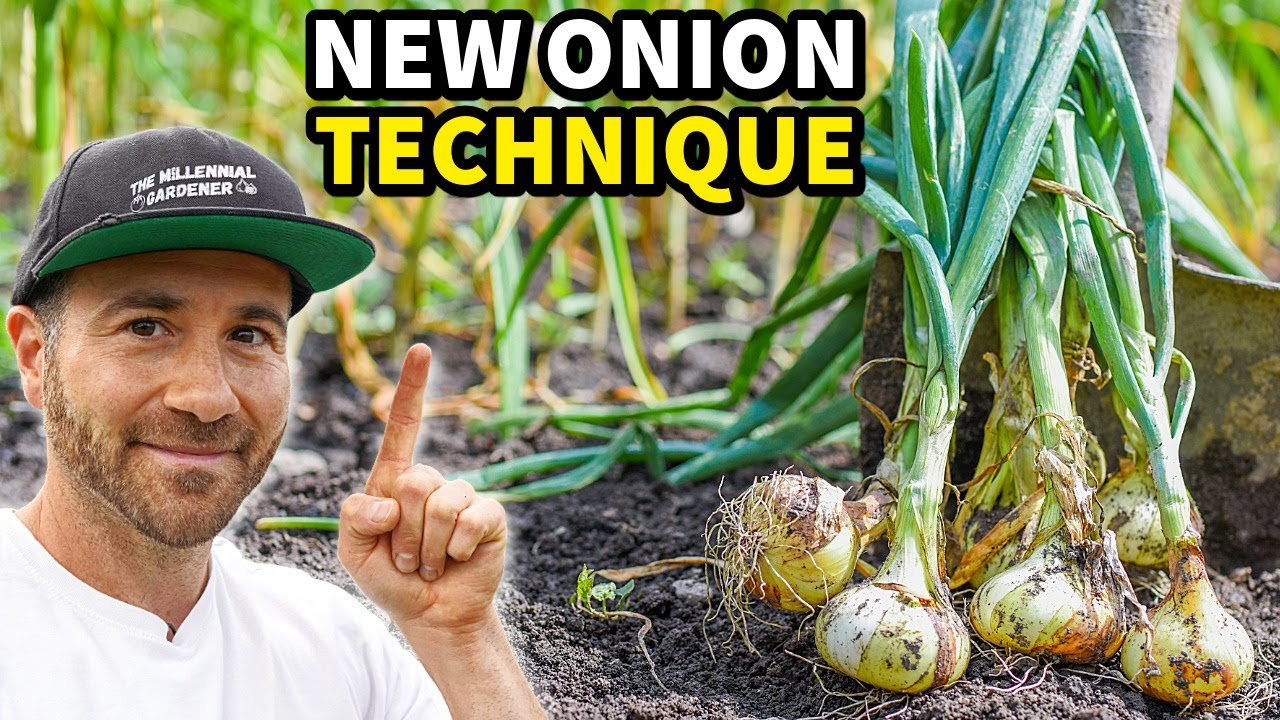Discover the ultimate method to grow perfect onions effortlessly. Whether you’re a seasoned gardener or just starting out, this guide will show you how to achieve healthy, flavorful onions that will elevate your garden to the next level. Get ready to transform your onion-growing skills and enjoy a bountiful harvest!
Introduction
Imagine wandering through a thriving garden, the air heavy with the sweet, pungent promise of onions ripening beneath the sun’s watchful eye. There’s something profoundly satisfying about nurturing these humble bulbs from tiny seeds into a nonstop harvest—especially when you master the ultimate method for growing perfect onions. It’s not just about tossing seed packets into dirt and crossing your fingers; it’s an art, a science, and—dare I say—a small act of rebellion against the grocery store’s overpriced produce aisle. Whether you’re a seasoned green thumb or a curious novice eager to outdo the local farmers, this guide will unveil the secrets to cultivating onions that seem to grow like magic, all year-round if you play your cards right. From soil amendments to clever season extension techniques, prepare for a storytelling journey to onion nirvana that will inspire your garden beds to burst with flavor and abundance.
The foundation: Choosing the right variety and preparing your soil
If you want to grow onions year-round using this proven method for nonstop harvests, the first step involves choosing varieties that align with your climate and culinary dreams. Long-day onions demand about 14-16 hours of sunlight, making them perfect for northern gardens, while short-day onions thrive in milder zones, bulbifying happily with only 10 hours of daylight. Buying short-day onion seeds online is a simple, hassle-free way to access top-tier seed strains, ensuring you start with a robust genetic foundation. These tiny, shiny seeds hold the potential for rows of luscious bulbs, each one a promise kept.
Once your seeds are in hand, it’s time to focus on the soil—a crucial, often overlooked character in this growing story. You don’t just toss seeds into any dirt and hope for the best; you amend and protect your soil for optimal onion growth. Think of soil as the stage upon which your onion drama unfolds. Rich, well-draining, and slightly acidic (pH around 6.0-6.8), your soil needs a nutritious boost like composted manure, seaweed extracts, or organic fertilizers. Building a raised bed can improve drainage and make it easier to control fertility—imagine giving your onions a comfy sofa and psychedelic reading lamp to grow under. Keep the soil consistently moist but never waterlogged, and watch as it transforms into a veritable onion buffet, ripe and ready for harvest.
Protecting your burgeoning bulbs from pests and weeds is equally vital. Think of row covers, insect netting, and shade cloth as your garden’s armor—quiet, unobtrusive guardians silently warding off marauding critters and punishing sun. Implementing these protective layers early is akin to putting a lock on a treasure chest: secure, efficient, and preventing catastrophe before it begins. This meticulous soil and pest management sets the stage for the kind of root development that allows you to cultivate leeks, shallots, and bunching onions continuously, turning your garden into a persistent source of onion goodness.
Building the ideal growing environment: extending your season and optimizing watering
Now, let’s talk about beating the seasonal clock. You can build a PVC hoop house to extend your growing season—imagine a miniature greenhouse, a translucent cocoon that shields your precious onions from unpredictable frosts and punishing summer heat. By integrating simple, inexpensive PVC pipes and a plastic cover, you create a microclimate where onions can grow uninterrupted through winter or stretch their legs during the shoulder seasons. This DIY project is not only affordable but surprisingly satisfying—like wrapping your garden in a clear blanket, whispering, “Grow, little bulbs, grow.”
Efficient watering is another cornerstone of successful onion cultivation. Mastering different drip irrigation installation methods ensures your plants receive consistent, measured moisture without drowning or dehydration. Drip lines woven into your beds deliver water directly to the roots, conserving water and reducing disease risk—a win-win for your garden and your conscience. Whether you choose traditional drip tape, soaker hoses, or homemade DIY methods, setting your system up properly is akin to giving your onions a personal spa treatment—constant, gentle, and just right. As you refine your watering routine, you’ll notice your yields increase, and you’ll spend less time fussing over damp or parched soil.
To truly grow perfect onions, integrating supplemental tools like LED grow lights and seed starting mixes can jumpstart young seedlings when natural light wanes, especially if your garden runs into shorter days or cloudy seasons. Fertilizers formulated for onions and shallots—rich in organic nutrients like compost tea or fish emulsion—fuel their rapid growth phases. With these essentials and your new season extension strategies, your garden transforms into a perpetual onion production powerhouse, surpassing traditional growing methods in both cost-effectiveness and yield.
Transplanting, caring, and harvest: nurturing your onion empire
As your seedlings establish roots, the transition from tiny sprouts to mature bulbs is a delicate dance. Properly transplant onion, shallot, and leek seedlings with gentle hands and keen timing, ensuring they aren’t shock-treated by rough handling or overcrowding. Space them generously; these plants like their personal space, akin to a well-heeled city dweller avoiding crowded subway cars. Firmly set them into prepared beds, firm the soil around their delicate roots, and water deeply. That initial care decision echoes through to the size and health of your harvest—skip it, and your onions might never reach their full potential.
Throughout the growing season, fertilize with recommended products—preferably organic—to keep your onion empire thriving. Focus on nitrogen-rich feeds during leafy growth and phosphorus-potassium boosts as bulbs start to swell. Think of fertilization as a daily vitamin shot—necessary, timely, and part of a larger health regimen. Monitoring your plants regularly, protecting them with shade cloth during intense sun or insect netting against voracious pests, secures your efforts and shields your bounty from unforeseen setbacks.
When it finally comes time to harvest, patience is your virtue. Wait until the tops begin to yellow and fall over—nature’s secret sign that your onions have matured. Carefully loosen the soil, gently lift the bulbs, and cure them in a shady, well-ventilated spot. The reward? An endless array of onions, shallots, and leeks, ready to elevate your recipes or spice up your storage pantry. Master these techniques, and your garden becomes more than a patch of dirt—it’s a testament to patience, knowledge, and a little garden magic.
Frequently Asked Questions
How can I grow onions year-round using this method?
Growing onions year-round hinges on your ability to manipulate your environment and timing. By building a PVC hoop house, you create a protected microclimate that extends your growing season into colder months. Starting seeds indoors with LED grow lights ensures a steady supply of healthy seedlings, allowing you to plant successive batches throughout the year. Amending your soil with organic fertilizers and maintaining consistent watering with drip irrigation keeps your onions happy and productive regardless of outside weather. With continuous succession planting and proper season extension, you can enjoy a non-stop harvest that surpasses traditional seasonal limits.
What are the cost benefits of this onion-growing technique compared to planting sets?
This method surpasses growing onion sets in cost-effectiveness because it leverages seed starting, which is often cheaper and yields more plants per dollar spent. Seeds have a longer shelf life and allow for a broader selection of varieties, including specialty or heritage types not available as sets. Additionally, investing in a DIY PVC hoop house and drip irrigation system may seem like an upfront expense, but over time, the produce harvested justifies the investment — reducing grocery bills and eliminating the need to buy onions at retail prices. Essentially, this approach transforms your garden into a sustainable, money-saving onion farm.
Can I cultivate other alliums like leeks, shallots, and bunching onions with this technique?
Absolutely. The beauty of this method lies in its versatility. Leeks, shallots, and bunching onions thrive under similar conditions, sharing the same nutrient needs and biannual growth habits. By adjusting your planting schedule and providing proper transplanting care, you can keep a continuous cycle of these flavorful alliums going. They can be planted in the same beds, benefiting from your soil amendments, row covers, and watering improvements, turning your garden into a veritable onion kingdom—diverse, resilient, and endlessly harvestable.
How do I protect my plants from pests and disease?
Protection begins before issues arise. Covering your beds with insect netting and row covers prevents common pests like onion flies and thrips from laying eggs or causing damage. Shade cloth during scorchingly hot days preserves plant health and prevents bolting—when onions prematurely flower, ruining their bulb quality. Regularly inspecting your plants, using companion planting strategies, and applying organic pest deterrents when needed form a comprehensive defense system. These measures, combined with healthy soil and excellent drainage, keep your onions, shallots, and leeks disease-free and thriving.
What are some expert tips and gardening hacks to maximize my onion yield?
Expert gardeners swear by things like crop rotation, to prevent soil depletion and disease buildup, and deep, infrequent watering to promote robust bulb development. Using seed starting mixes with added organic matter jumpstarts seedlings faster and more uniformly. Incorporating compost teas or fish emulsion as supplemental feeds boosts growth and flavor. Watching detailed tutorial videos from gardening pros can reveal nuanced tricks—like how to pinch off flowers to delay bolting or when to start harvesting for the sweetest bulbs. Connecting with a gardening community online offers a wealth of DIY tips, troubleshooting advice, and inspiration, transforming your onion-growing venture from a chore to a passionate craft.
Final Thoughts
Growing perfect onions isn’t just about planting a seed and hoping for the best; it’s an ongoing dialogue with nature, a dance of patience, preparation, and persistence. When you build the right environment—be it a PVC hoop house or a well-drained, amended bed—and commit to consistent care, the results are more than just bulbs; they’re a testament to your dedication. Whether you’re cultivating leeks, shallots, or bunching onions alongside your classic red and white favorites, each harvest feels like a small victory—proof that with a little know-how and a lot of love, your garden can sustain you in every season. So, get your hands dirty, set your sights high, and remember: every onion starts with a tiny seed, but grows into a symbol of your gardening mastery.

